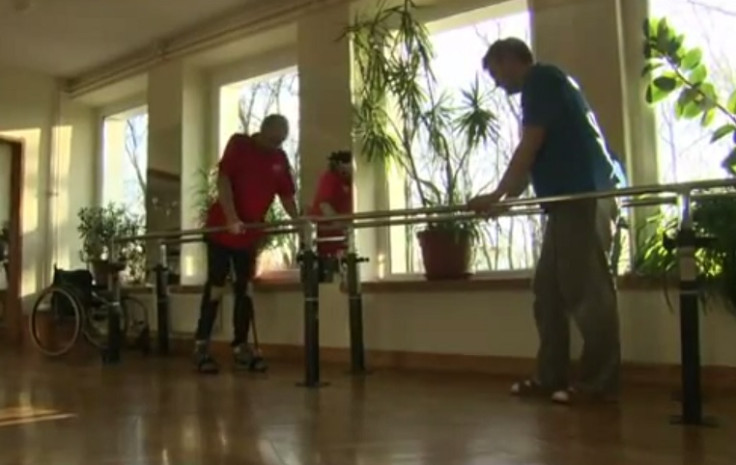Paralysed Man Darek Fidyka Walks Again: World-First Treatment Uses Nose Cells to Repair Spinal Cord Injury

Paralysis sufferers around the world have been offered the possibility of a cure for the first time in history, after a new therapy pioneered by British scientists has allowed a man with a severed spinal cord to walk again.
Darek Fidyka, a Bulgarian man who was paralysed after a knife attack in 2010, is now able to walk using a frame.
He told BBC News that walking again was an "incredible feeling" and said it was like being "born again".
The treatment, which was carried out by surgeons in Poland in collaboration with scientists at University College London, involved transplanting cells from Fidyka's nasal cavity into his spinal cord.
How does the therapy work?
The therapy used olfactory ensheathing cells, OECs, which are specialist cells that form part of the sense of smell. The cells repair damage to nasal nerves.
In the first procedure of its kind, doctors removed one of Fidyka's olfactory bulbs (the neural structure that the cells come from) and grew cells in the culture.
Then, doctors implanted the harvested cells into an 8mm gap in the spinal cord of Fidyka. He had been confined to a wheelchair after an attacker sliced through his spine, leaving just a thin strip of scar tissue on the right.
After the assault, Fidyka was given a less than 1% chance of the slightest recovery by doctors.
Around 100 micro-injections of OECs were made above and below the injury. The surgeons then took four strips of nerve tissue from his ankle and placed them across the gap in the cord.
According to the scientists, the OECs provided a pathway to enable fibres above and below the injury to reconnect, using the nerve grafts to bridge the gap in the cord.
Why is this a breakthrough?
In the case of Fidyka, scientists were able to use his olfactory bulb, the richest source of OECs, so there was never a danger of rejection. This meant immunosuppressive drugs were unnecessary.
The neural circuitry responsible for our sense of smell is the only part of the nervous system that regenerates throughout adult life, a phenomenon the researchers exploited to carry out the procedure.
Scientists believe the recovery is due to regeneration, as signals from the brain controlling muscles in the left leg travel down the left side of the spinal cord.
Follow-up MRI scans suggest that the gap in the cord has closed up.
How successful was the treatment?
Prior to the treatment, Fidyka had shown no sign of recovery despite months of intensive physiotherapy.
He noticed the treatment had been successful three months afterwards, when his left thigh started building muscle during a programme of intense exercise. Fidyka underwent the programme for five hours a day, five days a week, at the Akron Neuro-Rehabilitation Center in Wroclaw.
Six months after surgery, Fidyka was able to take his first steps along parallel bars, using leg braces and the support of a physiotherapist. Now, two years later, he can walk outside the centre using a frame.
According to researchers, the patient has also regained some bladder sensation and sexual function.
Professor Geoffrey Raisman, the head of UCL's Institute of Neurology who conducted the research into OECs, told The Independent: "I believe this is the first time that a patient has been able to regenerate severed long spinal nerve fibres across an injury and resume movement and feeling.
"We believe that this procedure is the breakthrough which, as it is further developed, will result in a historic change in the currently hopeless outlook for people disabled by spinal cord injury."
In the future, the scientists hope to treat another 10 patients in Poland and Britain.
Dr Pawel Tabakow, from Wroclaw Medical University, one of the world's top spinal experts who led the surgeons performing the treatment, said: "Our team in Poland would be prepared to consider patients from anywhere in the world who are suitable for this therapy. They are likely to have had a knife wound injury where the spinal cord has been cleanly severed."
The groundbreaking research was supported by the Nicholls Spinal Injury Foundation and the UK Stem Cell Foundation. The study was detailed in the journal Cell Transplantation.
© Copyright IBTimes 2025. All rights reserved.






















